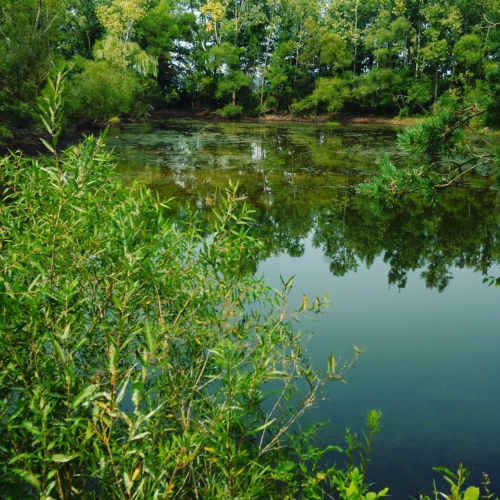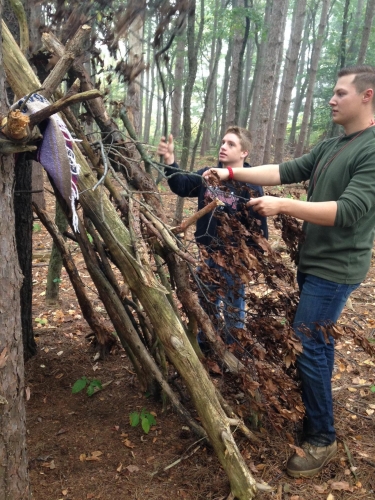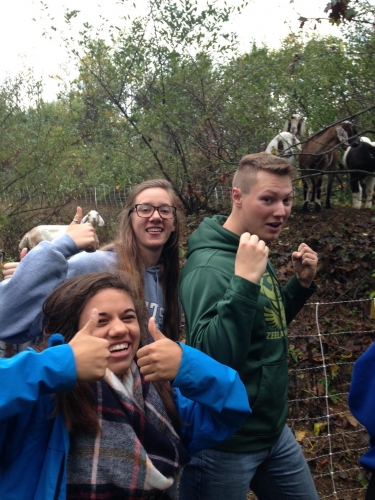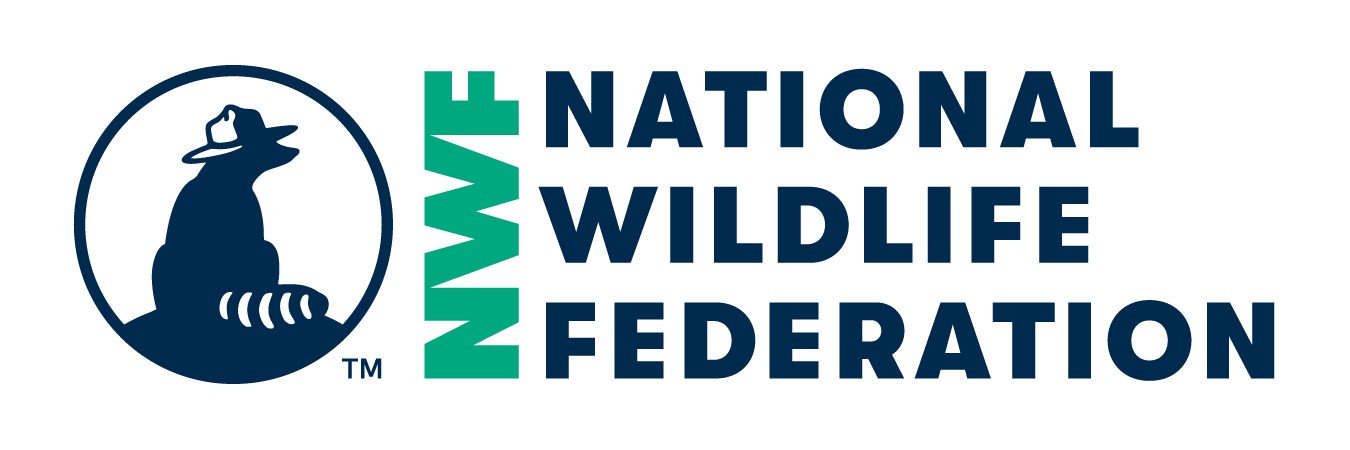Creating a Citizen Science Park
EcoTopic / Project Category
Education & Awareness, Habitat & Wildlife, Outdoor Education & Leadership
Rule Label
Project Goal Summary

Our Natural Resources and Conservation program is busy at work creating a Citizen Science park for long-term ecological monitoring. By creating a navigable trail system, removing invasive species, and engaging the public in citizen science projects, we hope to inspire residents of Ottawa County to become involved in conservation.
Rule Label
Project Location
Careerline Tech Center
Ottawa Area Intermediate School District
Holland, MI 49424
United States
Ottawa Area Intermediate School District
Holland, MI 49424
United States
Rule Label
Share more details about your Project:
Project Goals and News
Phase 1:Wilderness Survival Skills

The first component of getting to know the property was exploring! We headed out into the woods to learn skills like shelter building, gathering water from transpiration stills, and starting fires with flint and steel. After spending ample time in the wooded area, we had a pretty good idea of where we needed some trails to enhance our explorations.
Phase 2: Trail maintenance
Using the anecdotal evidence that we gathered from simply spending time in the woods, we were able to determine where we wanted to cut some trails. We used a brush hog to clear the initial trail through the underbrush and then continued to maintain the trail by trimming back trees and brambles with lopers and pruners. Eventually, we had three different trail systems through the woods, for which we gathered GPS data for creating maps in ArcGIS.
Phase 3: Prescribed browsing

During the second phase of our project, we began assessing what types of plants we had in our 22.8 acre parcel. Using Gleason's Guide to the Plants of Michigan (a dichotomous key published by the University of Michigan), we learned to identify some plants such as poison ivy, autumn olive, and Virginia creeper. Using quadrat sampling methods, we conducted a GPS-tagged plant survey through the woods in order to determine the highest densities of noxious weeds and invasive species. When we crunched the data, we were able to prioritize the areas of the woods that needed the most work. That's where the goats came in! By setting up a prescribed browsing project, we were able to reduce the use of chemical herbicides to remove the invasive species--the goats do the work for you!

The first component of getting to know the property was exploring! We headed out into the woods to learn skills like shelter building, gathering water from transpiration stills, and starting fires with flint and steel. After spending ample time in the wooded area, we had a pretty good idea of where we needed some trails to enhance our explorations.
Phase 2: Trail maintenance
Using the anecdotal evidence that we gathered from simply spending time in the woods, we were able to determine where we wanted to cut some trails. We used a brush hog to clear the initial trail through the underbrush and then continued to maintain the trail by trimming back trees and brambles with lopers and pruners. Eventually, we had three different trail systems through the woods, for which we gathered GPS data for creating maps in ArcGIS.
Phase 3: Prescribed browsing

During the second phase of our project, we began assessing what types of plants we had in our 22.8 acre parcel. Using Gleason's Guide to the Plants of Michigan (a dichotomous key published by the University of Michigan), we learned to identify some plants such as poison ivy, autumn olive, and Virginia creeper. Using quadrat sampling methods, we conducted a GPS-tagged plant survey through the woods in order to determine the highest densities of noxious weeds and invasive species. When we crunched the data, we were able to prioritize the areas of the woods that needed the most work. That's where the goats came in! By setting up a prescribed browsing project, we were able to reduce the use of chemical herbicides to remove the invasive species--the goats do the work for you!
Rule Label
Tag Your Project
prescribed browsing, citizen science, trail maintenance, parks and recreation, outdoor education
Rule Label
What other social media platforms is your project active on?
Website or Blog
Facebook
Twitter
Instagram
YouTube
Google+
Pinterest
Project Materials and Documents
[Spacer]
[Spacer]
[Spacer]
[Spacer]
[Spacer]
[Spacer]
[Spacer]
[Spacer]
[Spacer]
Certify Your EcoLeader Project
Are you ready to certify your project with National Wildlife Federation and share your positive impact on the environment?
CERTIFY YOUR PROJECT








Project Feedback